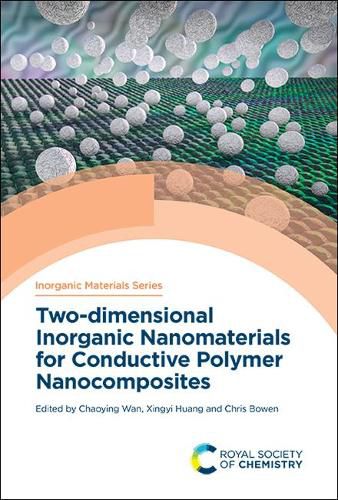Readings Newsletter
Become a Readings Member to make your shopping experience even easier.
Sign in or sign up for free!
You’re not far away from qualifying for FREE standard shipping within Australia
You’ve qualified for FREE standard shipping within Australia
The cart is loading…






Functional, flexible and lightweight products are in high demand for modern technologies ranging from microelectronics to energy storage devices. The majority of polymers are thermal and electrical insulators, which hinder their use in these applications. The conductivity of polymers can be significantly enhanced by the incorporation of conducting inorganic nanoparticles. However, this relies not only on the structure and function of the inorganic particles, but is highly determined by the morphology and dispersion of the nanoparticles, interfacial interactions and fabrication technologies of the composites. This book highlights the synthesis, chemistry and applications of two-dimensional (2D) inorganic nanoplatelets in polymer nanocomposites. Chapters cover technical challenges, such as surface functionalisation, compatibilization, interfacial interaction, dispersion, and manufacturing technologies of the polymer nanocomposites. The book also discusses the applications of these polymer nanocomposites in electronics and energy storage. With contributions from global experts, the book provides a much-needed overview of the field, giving advanced undergraduates, postgraduates and other researchers with a convenient introduction to the topic.
$9.00 standard shipping within Australia
FREE standard shipping within Australia for orders over $100.00
Express & International shipping calculated at checkout
Functional, flexible and lightweight products are in high demand for modern technologies ranging from microelectronics to energy storage devices. The majority of polymers are thermal and electrical insulators, which hinder their use in these applications. The conductivity of polymers can be significantly enhanced by the incorporation of conducting inorganic nanoparticles. However, this relies not only on the structure and function of the inorganic particles, but is highly determined by the morphology and dispersion of the nanoparticles, interfacial interactions and fabrication technologies of the composites. This book highlights the synthesis, chemistry and applications of two-dimensional (2D) inorganic nanoplatelets in polymer nanocomposites. Chapters cover technical challenges, such as surface functionalisation, compatibilization, interfacial interaction, dispersion, and manufacturing technologies of the polymer nanocomposites. The book also discusses the applications of these polymer nanocomposites in electronics and energy storage. With contributions from global experts, the book provides a much-needed overview of the field, giving advanced undergraduates, postgraduates and other researchers with a convenient introduction to the topic.